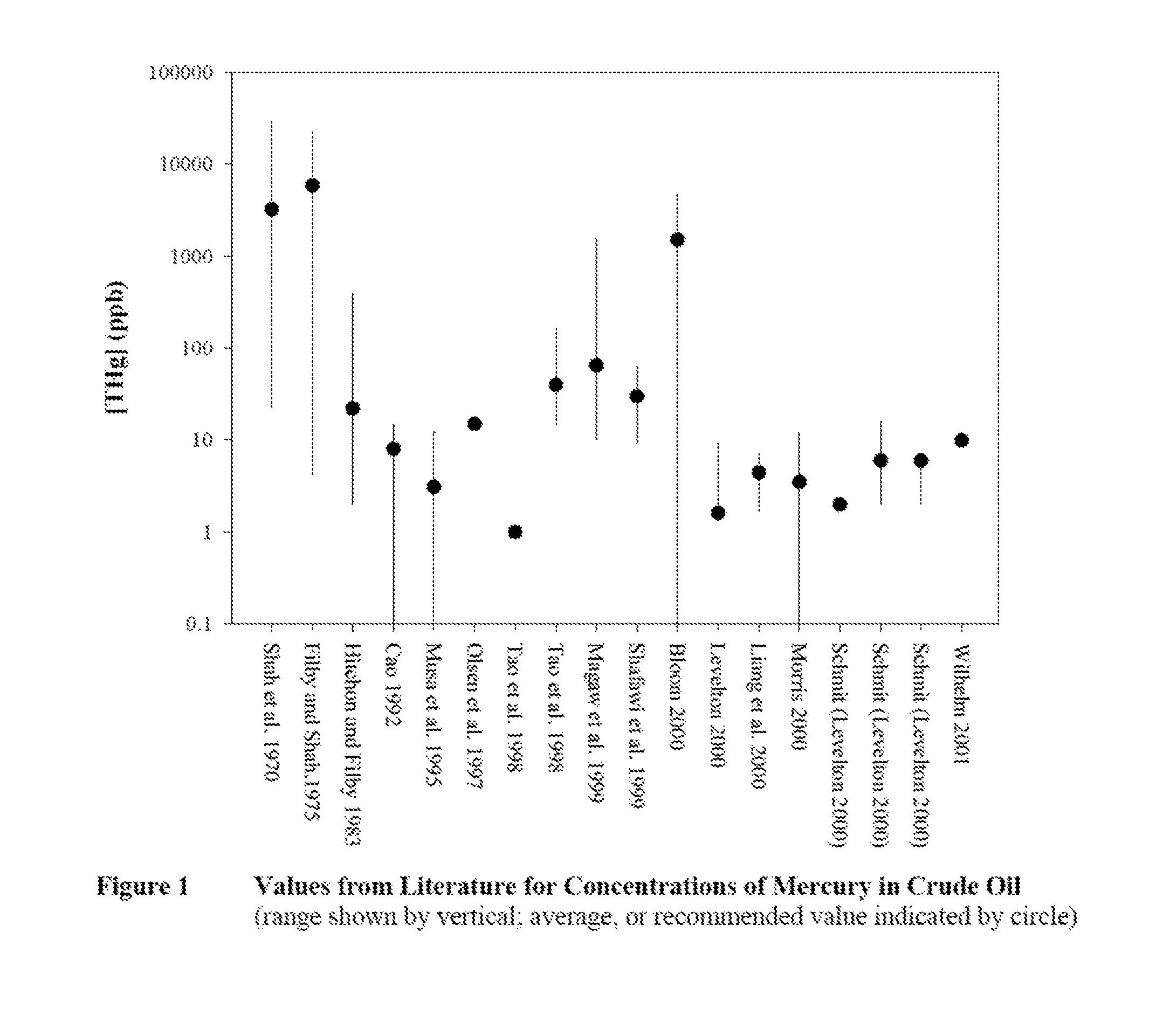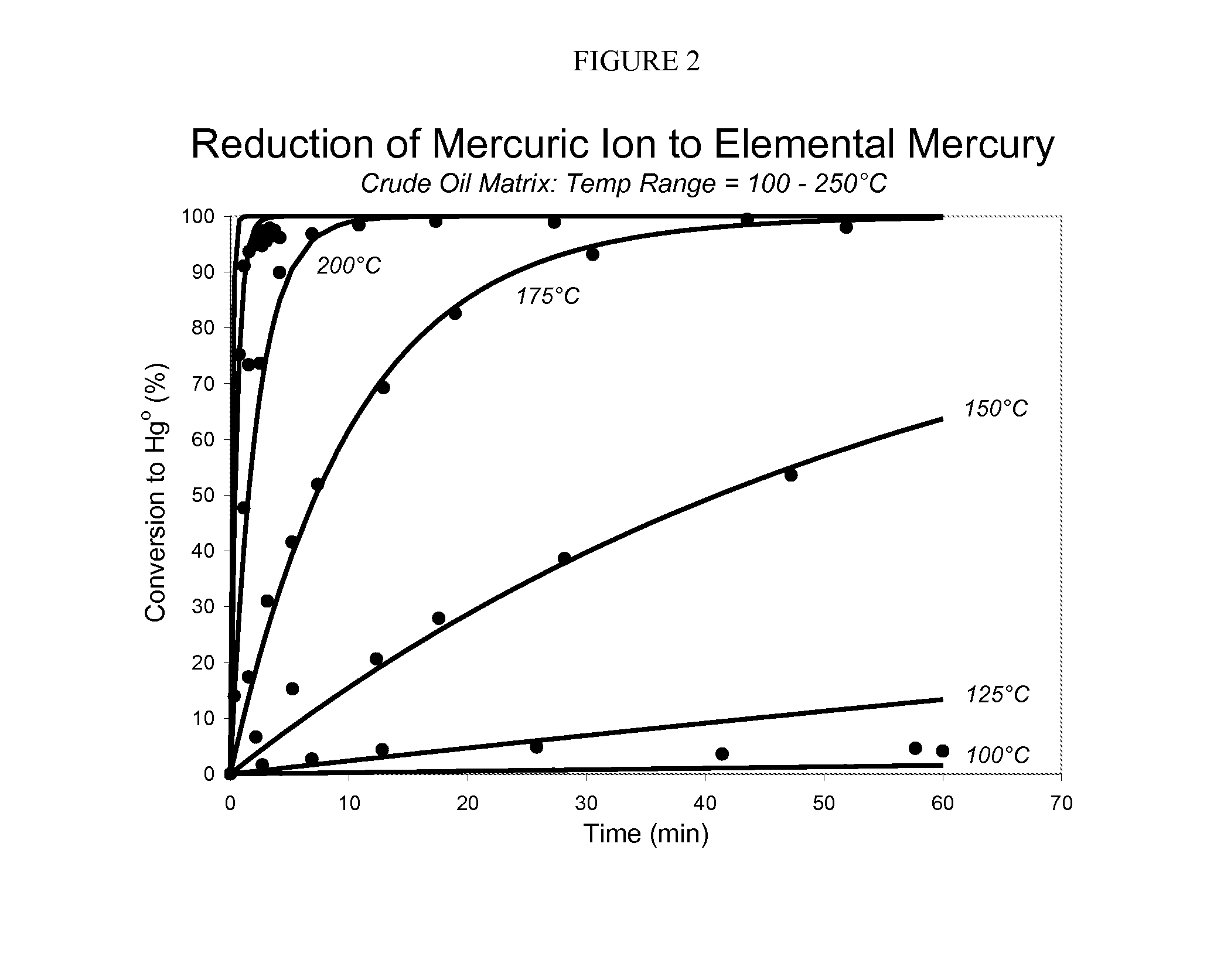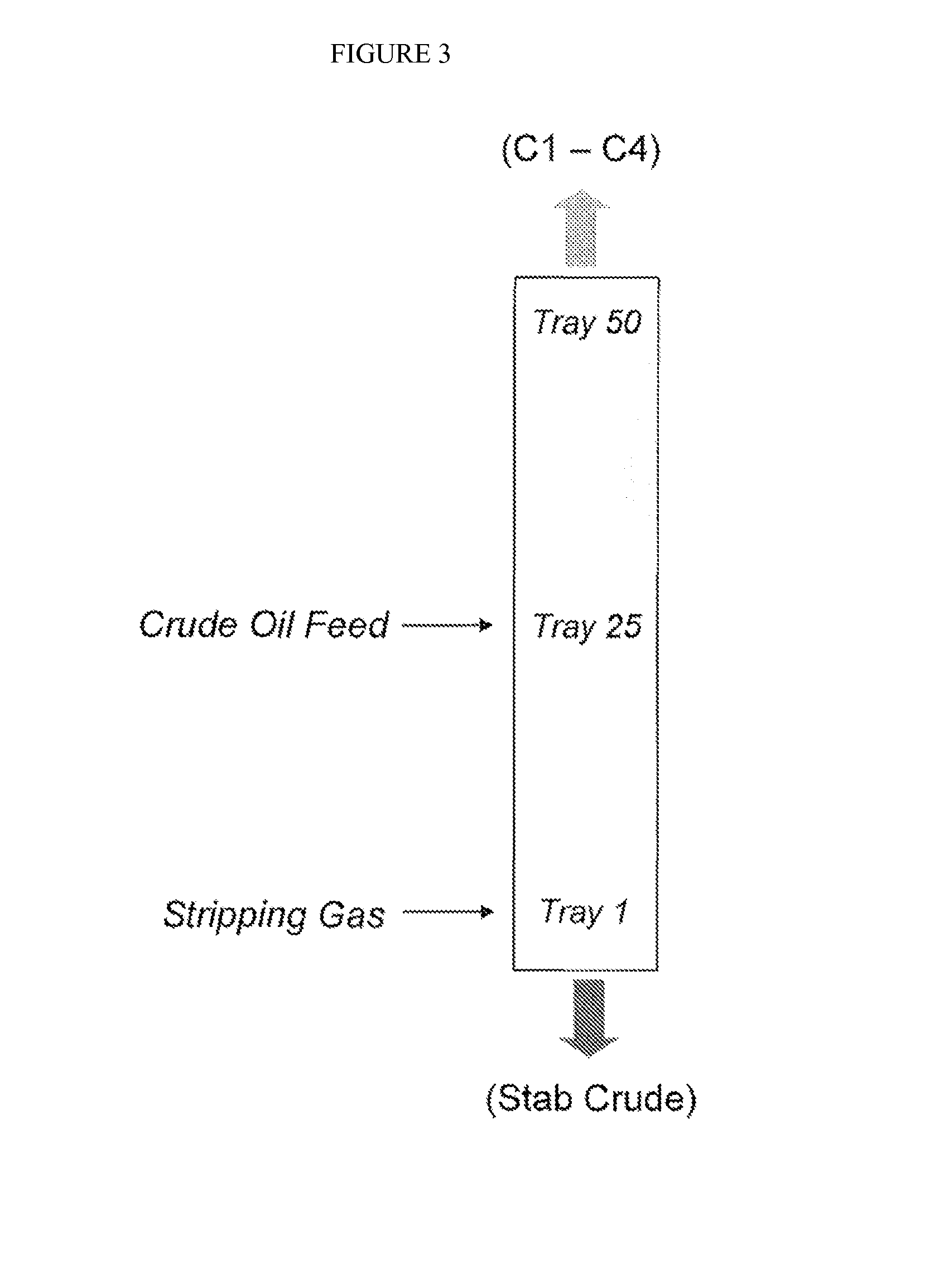Removing mercury from crude oil using a stabilizer column
a stabilizer column and crude oil technology, applied in the direction of liquid degasification, separation processes, chemistry apparatuses and processes, etc., can solve the problems of crude oil mercury data variability, difficult to compare mercury analysis results obtained in different laboratories using different analytical techniques, and handling samples can also significantly affect the measured results, so as to improve the stripping efficiency
- Summary
- Abstract
- Description
- Claims
- Application Information
AI Technical Summary
Benefits of technology
Problems solved by technology
Method used
Image
Examples
Embodiment Construction
[0044]The following description is intended to be illustrative only, and not unduly limit the scope of the appended claims. The present invention is exemplified with respect to crude oils. However, this is exemplary only, and the invention can be broadly applied to a variety of hydrocarbons or process streams.
[0045]This invention utilizes our discovery that in a crude oil matrix the thermal reduction of ionic mercury to elemental mercury can be carried out at moderate temperatures and within a commercially feasible time-frame.
[0046]A crude oil stabilization column can be used to perform this process because the temperature profile, residence time, column pressure, and internal gas generation can be optimized to achieve mercury removal as well as stabilization of the crude oil. This method is particularly beneficial, because this column is already used as a first treatment step in many plants, especially for refining of sour crudes containing sulfur. Thus, the process can be implemen...
PUM
| Property | Measurement | Unit |
|---|---|---|
| Temperature | aaaaa | aaaaa |
| Temperature | aaaaa | aaaaa |
| Temperature | aaaaa | aaaaa |
Abstract
Description
Claims
Application Information
 Login to View More
Login to View More - R&D
- Intellectual Property
- Life Sciences
- Materials
- Tech Scout
- Unparalleled Data Quality
- Higher Quality Content
- 60% Fewer Hallucinations
Browse by: Latest US Patents, China's latest patents, Technical Efficacy Thesaurus, Application Domain, Technology Topic, Popular Technical Reports.
© 2025 PatSnap. All rights reserved.Legal|Privacy policy|Modern Slavery Act Transparency Statement|Sitemap|About US| Contact US: help@patsnap.com



